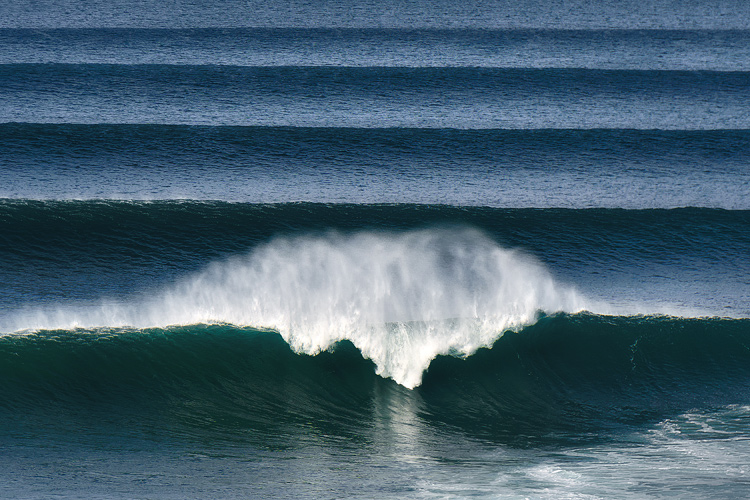A swell is a series of mechanical or surface gravity waves generated by distant weather systems that propagate thousands of miles across oceans and seas.
It's a succession of massive and crestless wind waves characterized by a narrow range of long wavelengths.
Ocean swells are often generated in mid-latitude depressions regions between 30 degrees and 60 degrees, in deep water regions, especially in the North Atlantic and North Pacific, but also in the South Pacific.
The majority of all high-energy swells produced on the planet peak during winter in the Northern and Southern Hemispheres.
They can be visible arriving on the horizon in evenly spaced out, parallel lines of waves.
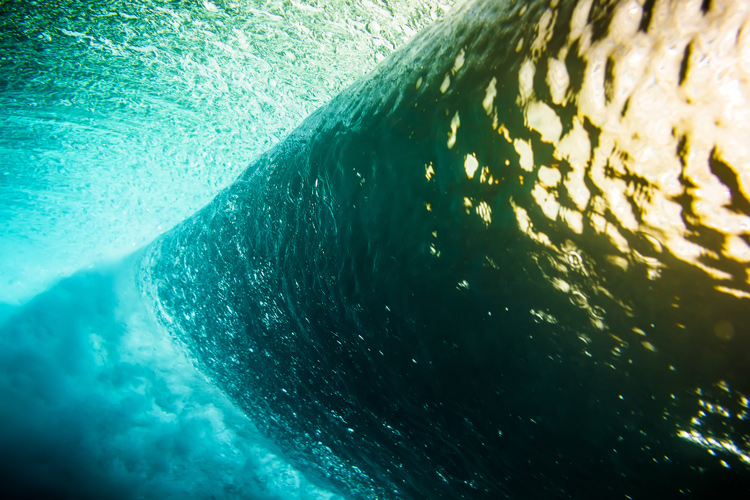
The Formation of a Swell
Swells are not generated by local winds blowing, for example, near the shore.
Instead, they're the result of the interaction of severe storms with a large fetch of water that takes place in the open ocean, thousands of miles away from landmasses.
A storm acts like a pebble dropped in a pond, sending out ripples of energy in concentric circles.
The longer and harder the wind blows, the bigger the ocean swell.
As a swell moves away from the storm, wave trains with a longer wavelength will travel faster and overtake shorter wavelength swells.
Ripples - or capillary waves - will continue to grow until gravity does its part.
As waves propagate into shallow water, they start to slow down, the wavelength is shortened, and the wave height rises.
On a gently sloping beach, waves will arrive mushy and crumbling, breaking in water deeper than a depth of 1.3 multiplied by the wave height.
A steep slope or reef will form hollow, pitching waves in shallower waters.
A 10-foot wave should break in 13 feet of water, but a sudden depth change, offshore winds, and a fast-moving groundswell can greatly reduce the breaking depth before taking the tide into consideration.
A swell often refers to groundswells and not wind swells.

Groundswells and Windswells
A groundswell is a group of traveling waves that leave the generating area and propagate by themselves for vast distances.
When they reach the shoreline, it has already accumulated a lot of energy and period (in seconds) between consistent and powerful wave trains.
They're the perfect swell formula for surfers and surfing.
On the contrary, the wind swell - also called windsea or wind sea - is a short-lived swell generated by local winds.
These disorganized, short-period swells are common in the North Sea, the Baltic Sea, and the Mediterranean Sea, although they can be seen anywhere in the world.
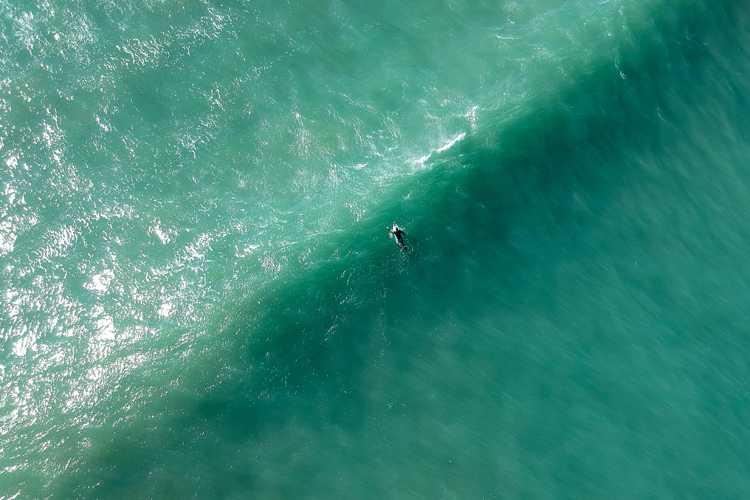
Swell Period, Height, and Direction
The swell period is the amount of time it takes for two successive wave crests to pass through a determined point.
Long-period swells harness energy, travel faster, and easily cope with local winds and currents, resulting in larger beach waves.
The first waves of a long-period swell are called forerunners and usually move faster than the remaining carriages of the wave train.
The swell height corresponds to the average height of the highest one-third of the waves in a given period.
It is measured from trough to peak. The seconds between one peak and the next can be determined by ocean buoys to calculate swell height.
The harder the wind, the greater the distance it blows on the fetch, and the longer the period, the bigger the wave, the longer the wavelength, and the longer the period between crests will be observed.
A sustained and consistent 50-knot wind blowing for nearly three days over a minimum distance of 1,600 miles (2,600 kilometers) could generate wave heights of 50 feet (15 meters).
Swell direction is the direction from which it is traveling, and it is measured in degrees or cardinal points.
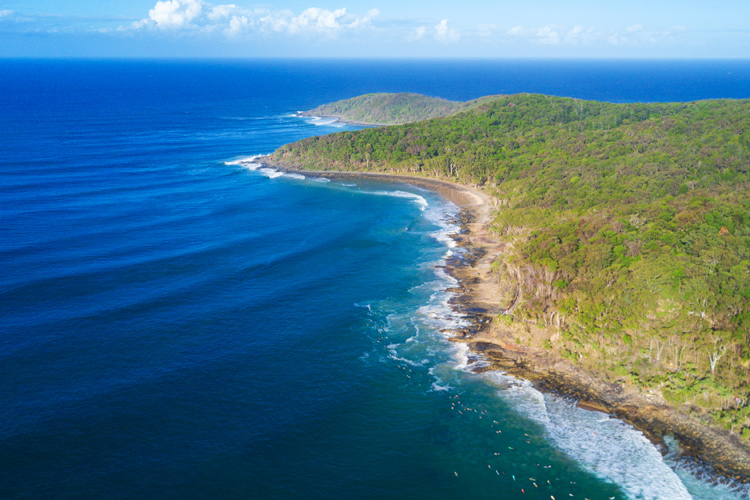
Propagation, Dispersion, and Grouping
As waves propagate away from the source, they start grouping into swell lines and traveling and spreading in a circumferential dispersion.
And for every doubling of the propagation distance, the significant wave height reduces by about one-third.
In terms of wavelength, the longer the distance between two crests, the faster the waves will travel across the open ocean, meaning that faster waves with longer wavelengths will progressively overtake the slower, shorter wavelength swells.
Surfers refer to groups of waves that reach the shoreline as "sets."
Scientifically speaking, wave grouping is the result of different swells traveling in the same direction and merging together.
When the peaks of two different wave trains coincide, a larger wave will result.
However, when the peak of one wave train coincides with the trough of another, a canceling-out effect occurs, resulting in lulls at the beach.
Ripples vs. Waves vs. Swell
There's widespread and understandable confusion as to what the difference between swell and waves is.
A swell is a group of waves that have gathered enough energy from the wind to reach another stage of maturity that allows them to travel well beyond the place of their origin.
It can pass through and under another one or even more than one swell and absorb them in its path, resulting in more organized, well-spaced, and well-defined swell lines.
A simple ripple (photo below) will not be able to travel thousands of miles without strong winds blowing for a long period.
Unlike swells, waves do not ride on top of each other for a long period of time.
From a technical and oceanographic perspective, the ocean observes:
- Ripples: Waves with a period between crests of up to a second;
- Waves: Undulations with a period between crests of between one and ten seconds;
- Swells: Groups of waves with a period between crests of more than ten seconds;
Micronesian and Polynesian ocean explorers were some of the first to spot the difference between ripples, waves, and swells.
As experienced navigators, they learned to identify swells by their shape, period, and rhythm or motion to sail smoothly across calm seas and avoid rogue waves.
These Pacific islanders were able to read the interference patterns of swells that were driven by the prevailing northeast trade winds.
Swells tend to bend around the islands and spread out in the channels between them.
The overlap of multiple swells from different directions produces a distinctive interference pattern that can help fix your location.

Tropical Storm Swells
Hurricane, cyclone, or typhoon swells are groundswells generated by depressions that often travel from east to west in sub-tropical latitudes (between 10 degrees and 30 degrees).
As a result, when these storms occur, the ocean will mostly host E swells.
Tropical storms only form when the temperature contrasts between air and ocean are at their maximum.
These unpredictable, slow-moving seasonal swells produce a significant amount of large waves.
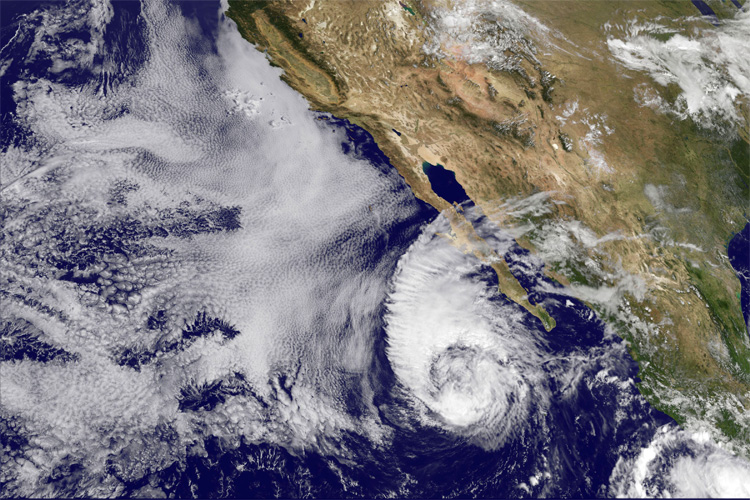
Walter Munk and the Weber Brothers
Wilhelm Eduard Weber and his brother Ernst Heinrich Weber were the first scientists to produce major advances in the experimental study of waves.
In a lab, they discovered a tight connection between the revolution of blobs of water in stationary orbits and the passage of a surface wave.
They both have the same period, and the whole train of waves advances by one wavelength in one period of oscillation.
Physicists call this a traveling wave train. Common people can call it a swell.
Walter Heinrich Munk was one of the most famous physical oceanographers of all time.
In the 1940s, he and Harald Sverdrup "invented" the science of forecasting waves and surf heights.
Later, in 1963, he proved that swell decays very little after it travels a distance from the edge of a storm equal to the storm's diameter.
The swell also decays by spreading sideways, not because of the resistance of the air above it, but due to the fact that it is absorbed in the boundaries of the ocean, i.e., in the surf zone.
